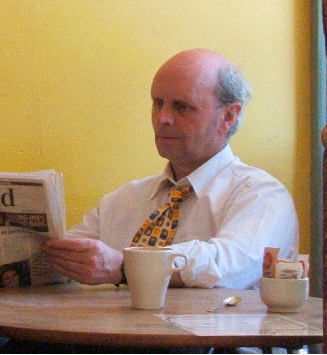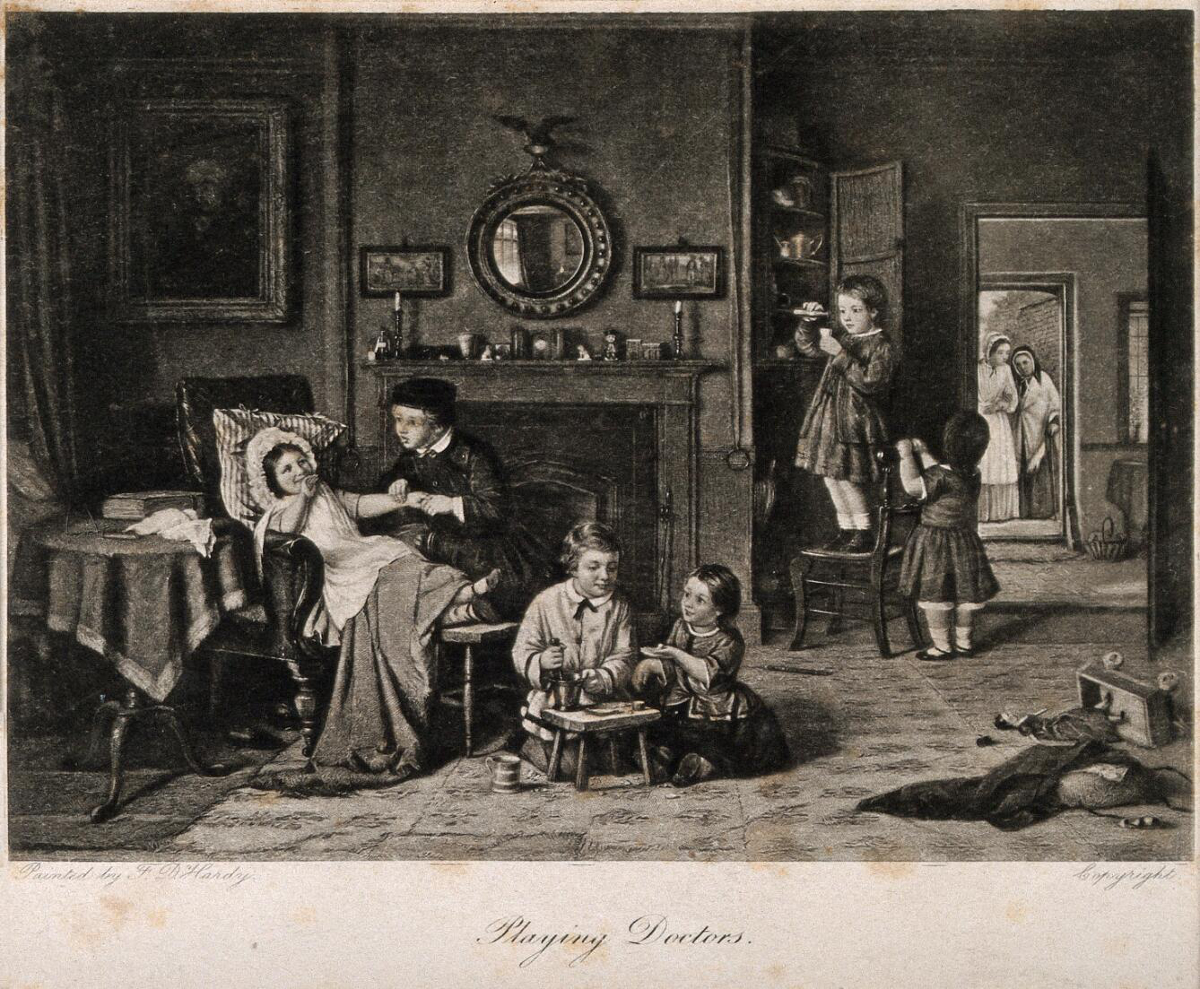Orthodoxy on trial III: Did flawed science beget flawed law?

David J Black
In part three of his series on the ME/CFS saga, David J Black examines the durability of medical dogma in the face of facts and the risk of a new psychogenic orthodoxy prevailing with a generation of Long Covid sufferers, whose malady bears a striking resemblance to ME/CFS. See also: parts one and two.
The question arising here is that where the informed consensus is that a particular prevailing orthodoxy which has had the backing of regulatory authority turns out to be, in the robust legal terminology of an American attorney friend, “a crock of horse feathers” (though I’m not so sure he actually used the word “feathers” – it might have been something else), then should there be some necessary obligation on the part of the courts to reflect on past judgments and determinations which, with the prevailing psychogenic orthodoxy being disapplied, were manifestly defective?
This impinges not only on the case of Fraser and another v Nice but inevitably invites some raking over old coals. What about the late Sophia Mirza, 32, who was coerced against her will to submit to a regime of CBT/GET? No one diagnosed the spinal inflammation causing her ME/CFS. It would eventually kill her. Or what about CFS victim Brynmor John MP who was advised to follow an exercise regime based on what is now regarded as unfounded and unethical medical advice, and dropped dead as he was leaving the House of Commons gym.
The propaganda war which characterises the ME/CFS controversy should concern us all. With the Science Media Centre as a de facto ‘black-ops’ hub, the UK media has overwhelmingly supported the psychogenic orthodoxy, portraying ME/CFS sufferers and sceptical physicians and researchers as ‘activists’ on a par with animal rights campaigners and anti-vaxxers. With such headlines as “It’s safer to insult the prophet Mohammed than to contradict the armed wing of the ME Brigade” and “How the ME zealots tried to terrorise me” this was hardly the Fourth Estate’s finest hour.
Nor was it only the tabloids following this line. The medical profession’s journal of record, The Lancet, was also in thrall to the orthodoxy. Editor Richard Horton had peremptorily dismissed the psychogenic model’s critics as “a fairly small, but highly organised, very vocal and very damaging group of individuals who have, I would say, actually hijacked this agenda and distorted the debate so that it actually harms the overwhelming majority of patients”.

Children Playing at Doctors, Frederick Daniel Hardy (1863)
In 2015 Mr Horton was sent an open letter critical of PACE by seven leading US and UK scientists; he declined to respond. Three months later the letter was re-sent, this time with 43 signatures, but he declined to publish it it. A year later much the same letter, this time with 102 distinguished signatories, and endorsed by 27 ME/CFS charities from 17 countries, was sent to the Journal of Psychological Medicine, and finally published.
We may note in passing that in the very year Douglas Fraser’s hopes were dashed by Lord Simon in the High Court, Richard Horton, together with the Science Media Centre’s Fiona Fox and science minister Lord Drayson (famously elevated to the peerage after contributing more than £1 million to New Labour) were all closely involved in organising a World Conference of Science Journalists. Not all journalists were persuaded; writing in Columbia Journalism Review for example Connie St. Louis, President of the Association of British Science Writers, noted that the Science Media Centre “cast biased press briefings such as one on GMOs, funded by Monsanto”.
So when is a principle of regulatory primacy akin to force majeure legally applicable, and when is it not? On the one hand Douglas Fraser’s judicial review ended up with his claims being abruptly dismissed on the grounds that his supposedly “unfounded allegations” were “damaging to science” while his “perceptions of bias” with regard to the NICE guidelines were “demonstrably false”.
On the other hand when, a decade later, the NICE guidelines were themselves shown to be demonstrably false and damaging to science – thus vindicating the key arguments of Mr Fraser’s counsel – the decision by NICE to withdraw the CBT/GET recommendation seems to carry no great weight with the paediatricians of Bath’s Royal United Hospital who mysteriously claim that CBT/GET is still a NICE recommendation, evidence to the contrary notwithstanding. It seems extraordinary that the prima facie breach of guidelines in this case impinges directly on the care and treatment of children. Questions of medical ethics are clearly in point, but the apparent insouciance of some at the Royal United Hospital would seem to override all such considerations, despite the presence of two of them on NICE’s ME/CFS Guideline Committee.
For the avoidance of doubt, it is generally settled and agreed that the psychogenic orthodoxy is now a dead parrot. ME/CFS no longer labours under the comprehensive linear classification that it is a medically unexplained “aberrant illness belief” which confines it to psychiatry. Yet advocacy groups and individual patients have had freedom of information requests in relation to the PACE trial stonewalled, while the myth of a bogus martyrology conjured up by several psychogenic researchers who claimed they were being harassed by ‘ME activists’ has largely been exploded.
The key breakthrough came in August 2018 when an Australian ME sufferer’s application to the UK Information Commissioner’s tribunal for a release of data was upheld. NICE appealed, and lost. When the unpublished data from the trial was independently analysed it showed that reported recovery rates had been grossly inflated and that the PACE authors had overstated improvement and recovery rates possibly as much as threefold. Thus was ‘PACE-gate’ born.
In the USA, where the UK’s psychogenic model had originally been accepted by the Centers for Disease Control (CDC) and such hospitals as the Mayo Clinic, the facade was already crumbling. In 2015 the US National Academy of Medicine rated ME/CFS as “a serious, chronic, complex, systemic disease” rather than a psychiatric disorder and the National Institutes for Health stated the “medical profession has been responsible for causing distress to patients with ME/CFS by ignoring patients’ calls for medical help and failing to adequately research the disease”. In 2018 the CDC finally classed ME/CFS as “a biological illness, not a psychologic disorder”.

Stanford University
The Americans, meanwhile, had been making biomedical advances. In 2019 a Stanford University team devised a blood-based test that successfully identified study participants with ME/CFS. As early as 2013 another Stanford study had found statistically significant improvements in cognitive function and reduced mental fatigue in a small cohort of patients treated with the antiviral drug Valganciclovir. A witness listed as ‘Citizen 5’ told a 2018 CFS advisory committee to the Office of the US Assistant Secretary for Health: “I was treated with high doses of anti virals [and] had a 13 year remission from the most debilitating effects of this illness.” It’s quite a thought that if Citizen 5 had been a British ME/CFS victim such treatment would almost certainly have been withheld.
This controversy is not a simple war between psychiatrists and organicists. Indeed, many of the psychogenic model’s fiercest critics are leading psychiatrists like US Professor Jonathan Shedler, whose 2015 lecture Where is the Evidence for Evidence-based Therapy was a forensic denunciation of CBT. Other critics include the psychologist and author Oliver James. On the other hand, it was not a psychiatrist but an infectious diseases physician, Dr Alastair Miller, who wrote only weeks before the GET/CBT NICE guidelines were abandoned:
“It seems that some behavioural interventions such as cognitive behaviour therapy and graded exercise supervised by appropriately trained therapists does help some people to recover and there is no reason to believe that similar approaches may not help with post Covid19 fatigue.”
NICE, while it may have come out with its hands up as far as CBT/GET is concerned, to this day sticks implacably to its ‘do not use’ recommendation for anti-virals. It seems that this is one vestigial prejudice against the biomedical approach which NICE can’t quite bring itself to give up – a physician might call it a ‘sequela’.
As possible biomedical pathways emerged, anger at the psychogenic orthodoxy has even erupted among psychiatrists like Colorado-based Dr Theodore Henderson, who noted that of his ME/CFS patients who received antivirals, 85 per cent responded positively, while among adolescents that figure jumped to 92 per cent. In the UK, meanwhile, antivirals remain embargoed. Writing in Psychiatry Advisor in March 2015 Dr Henderson laid his views on the line:
“Anything that takes the public eye or the medical community’s effort away from treating ME/CFS as a viral illness is a disservice - [looking] at the hundreds of my patients who have resumed normal lives after anti-viral treatment, it is hard to not feel the bile rise.”
A NICE review was promised in April 2021 but has been put off until August – that’s a lot of research time for a condition which, it appears, is on the point of increasing alarmingly as a result of a more recent phenomenon – long Covid, a condition which, according to Dr Anthony Fauci of the US National Institute for Allergy and Infectious Diseases, is “highly suggestive” of ME/CFS.
The rules of this particular contest are beginning to change – and the effects, you may be sure, will be far-reaching.
David J Black is an author, playwright, and journalist who has written for, among others, The Sunday Times Scotland, Scotland on Sunday, and The National. His 2001 investigative book All the First Minister’s Men; The Truth Behind Holyrood exposed the scandal of the procurement and construction of the Scottish Parliament building.








